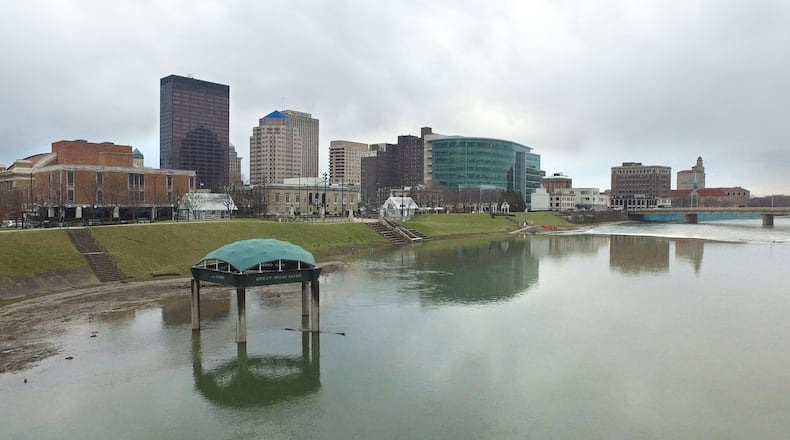Texas could see 50 inches of rainfall from Hurricane Harvey and its aftermath; parts of Houston reportedly saw two feet of rain in 24 hours. While this is unprecedented, Houston has one of the nation’s worst flooding problems, according to recent media reports.
RELATED: Elwell: How can a storm produce so much rain?
An investigation by ProPublica and The Texas Tribune in December found that flooding is a recurring problem in Houston, made worst by rampant development and global warming. The media outlets questioned whether enough was being one to address it.
The outlets reported that in one storm last year, parts of the Houston area received well over a foot of rain in 24 hours; a 2001 storm dropped 40 inches of rain on the city in five days.
In June, Dayton set a new daily local rainfall record after getting 2.33 inches of rain.
RELATED: Dayton sets rainfall record
The Miami Conservancy District was created after 8-11 inches of rain fell on saturated ground and Dayton flooded in 1913. The massive flood control system was built to withstand that event plus 40 percent: or 14 inches of rain in three days over the entire watershed.
That would be what’s called a 1,000-year storm, meaning it has a .001 percent chance of occurring any given year, according to conservancy district officials.
“Our system is designed to handle a 1,000-year event with storage to spare. Beyond that we can’t really say with confidence how much it can store,” said conservancy district spokeswoman Brenda Gibson.
In the century-plus since the 1913 flood, the worst storm the area has seen was in 1959 when up to 6 inches of rain fell over three days from Jan. 19 to 21.
RELATED: It rained so much in Houston that NWS added new colors to rainfall maps
In January 2005, two feet of snow melted and the area receive 7 to 10 inches of rain over two weeks.
Both times, the rivers swelled but the system held.
But a catastrophic storm is still possible.
Gibson said the National Weather Service estimates the “possible maximum precipitation” for this area to be 22-24 inches over three days over the entire 4,000-square-mile watershed — which would overwhelm the system.
RELATED: Harvey: Ohio Task Force 1 heading to Houston for boat rescues
“That would be the worst we would ever expect in this area,” she said.
So what are the odds that could happen?
“A level of magnitude beyond what statistics can accurately predict,” she said. “That’s the most extreme scientifically possible event for our area.”
IN CASE YOU MISSED IT:
About the Author

